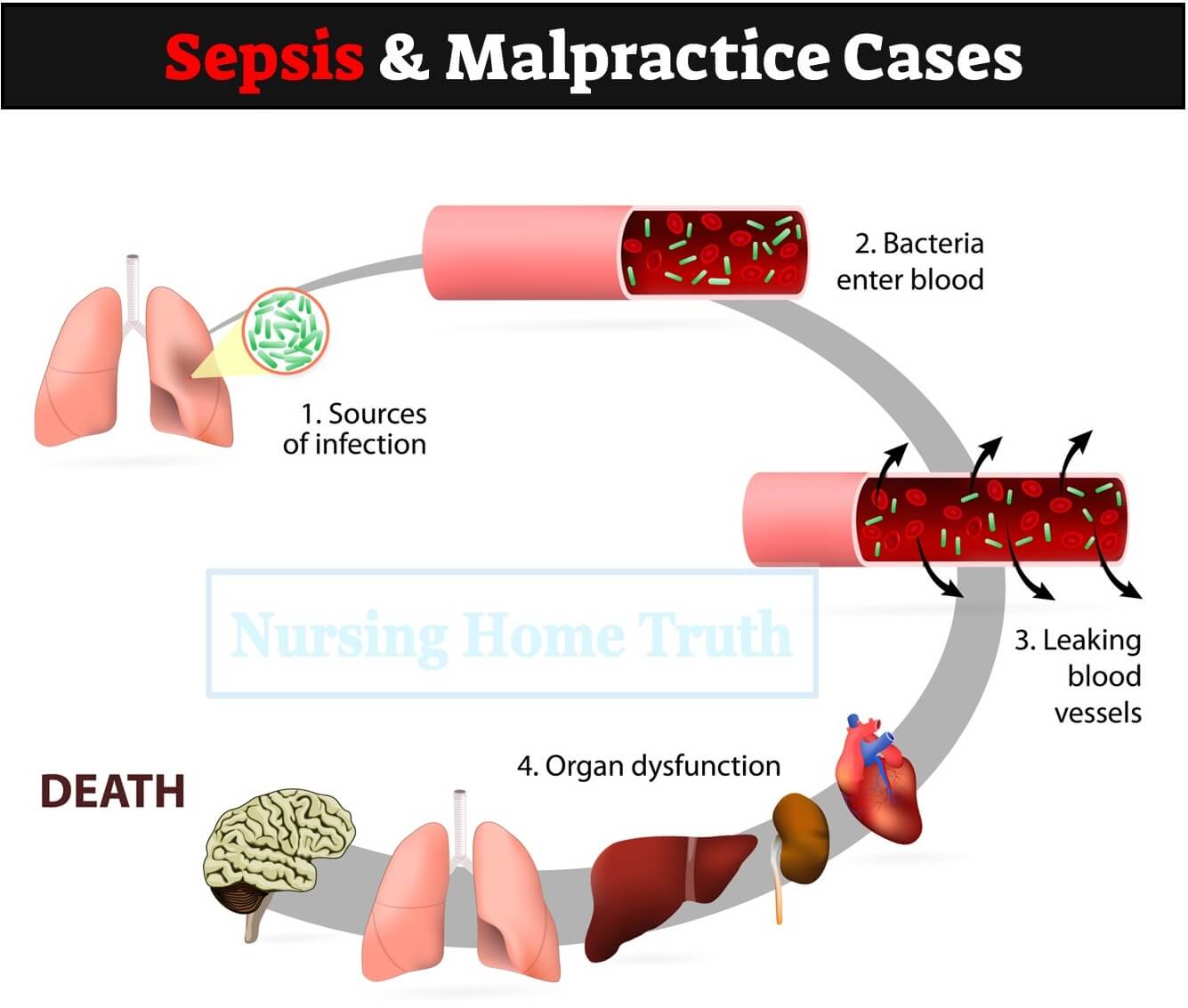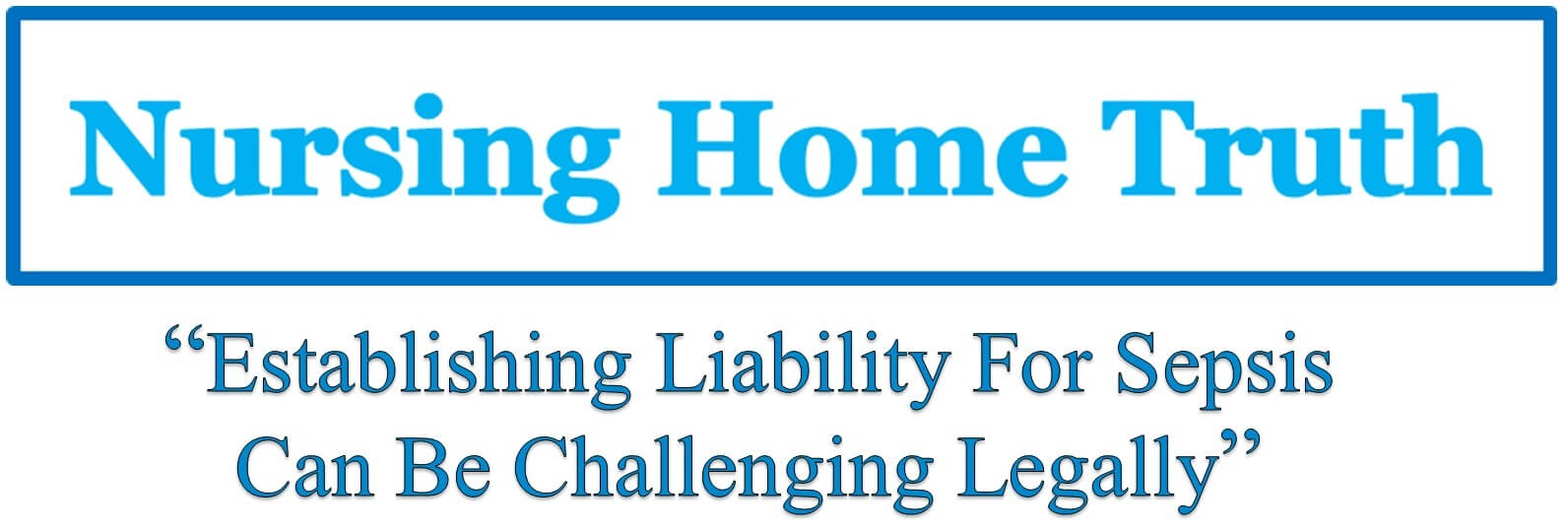Article Updated: January 18, 2022
Sepsis Malpractice Settlements Research
I have investigated over a dozen sepsis malpractice claims for clients in over half a dozen states around the country.
Needless to say, I am intimately familiar with investigating sepsis related malpractice and nursing home abuse and finding the pressure points to maximize sepsis settlements, especially sepsis settlements after death of a loved one.
Below, I utilize that familiarity in conjunction with medical and legal research to provide sepsis malpractice victims insight into potential sepsis claims, and settlement value for these claims.
If you have questions after reviewing my research, send me an email for help.
Clickable Table of Contents
Sepsis Settlement Topics
1 – Sepsis Malpractice Settlements Explained
2 – Examples of Sepsis Malpractice Settlements
3 – Sample Sepsis Settlements After Death
4 – Average Sepsis Malpractice Settlements
5 – Sepsis Malpractice Settlements Q&A
6 – Maximizing Sepsis Settlements
Resources
7 – Supporting Literature, Citations & Research
8 – About the Author
9 – Legal Help in Maryland & Nationally
Sepsis Malpractice Settlements Explained

The reason for this is that diagnosing sepsis itself is not an easy task which leads to sepsis settlements that become legally challenging in court.
This inability to properly diagnose sepsis is particularly damaging because misdiagnosis in sepsis cases leads to a death rate close to 55%.
All of this is taken into account in settling, and determining the settlement value, of a sepsis malpractice case.
Settling Sepsis Malpractice Claims
To settle a sepsis malpractice case it is important to focus on making sure a diagnosis of sepsis is definitively diagnosed. This is the first step in helping to ensure that a legal settlement can have a chance of being settled in your favor.
Whenever there are facts that are not in your favor, it does not mean that you will lose your case. That is not how it works.
Instead, bad facts have a negative “hedging” impact on your sepsis settlement. In other words, for example, if the sepsis diagnosis is less than definitive, this may reduce your sepsis settlement offer – made by the hospital or nursing home’s insurance company – by __%. What that percent is will vary based on the facts of your case.
The percentage of reduction in your offer will correlate strongly with the degree of weakness caused by the flaw in the evidence which relates sepsis to the alleged malpractice and correlating injuries.
A keen medico-legal eye is necessary to flush these medical sepsis related issues out, in conjunction with evaluating the legal pressure points that often reach beyond the medicine in the case.
Improper Treatment by Medical Providers
Sepsis is a serious infection of the blood and without fast diagnosis, there will be a delay in treatment, and any delays in treatment for sepsis will mostly result in death. That, in turn, will increase the settlement of your claim.
If the medical providers in charge of your care failed to diagnose you or your loved one in time, they cannot hope to provide proper treatment which can leave them open to a medical malpractice claim for sepsis related negligence.
Whether it is a doctor’s private care, a hospital, an urgent care center or a nursing home, if your health is in the hands of individuals who fail to do their jobs and protect your health because of negligence in their treatment which causes you to suffer sepsis, you have a right to sue them and recover a settlement for any sepsis related injuries, harms, and losses.
It is not enough to provide late care either, because in the case of sepsis, a few hours can mean the difference between life and death. This means delayed care is a form of negligence in sepsis cases that should always be considered and evaluated.
How a Sepsis Malpractice Settlement Can Help You
Sepsis malpractice settlements aim to help you or your affected love one by holding accountable those who failed to provide medical care that could have spared you pain and, in worse cases, death.
The settlement process can be difficult but with legal support there can be accountability for the medical providers who were in charge of your health.
These settlements rely on the facts of your case, including things like how long you had to wait before your were given treatment, if you were misdiagnosed or if you were not diagnosed at all, and if you were given the right treatment.
The combination of these variables, amongst your case specifics, will determine the amount of your sepsis malpractice settlement.
Examples of Sepsis Malpractice Settlements
Sepsis malpractice settlements are usually high because they indicate that you were not given proper care in multiple ways.
This process starts with failure to detect sepsis.
In an urgent care setting for example, it is often a slow reaction which leads to the inability to detect sepsis in a timely manner.
When the medical facility fails to detect sepsis fast enough they then leave you open to serious complications that can lead to death.
Example of Sepsis Malpractice Case
An example of sepsis malpractice was seen in the case of a 65-year old woman who was kept in the ER waiting for nearly 5 hours before she was given treatment.
This slow response in helping her ensured that even when treatment was given, it was not able to save her life, and she ultimately died.
The sepsis settlement in malpractice cases like this are more straightforward as the negligence is documented clearly with the lack of swift care causing the related injury.
It bears repeating then, that sepsis malpractice cases are not just matters of sepsis related medical negligence. They are often, simultaneously, cases of delayed treatment, too.
Sepsis Settlement After Death
Sepsis settlements after death also take place frequently as family members and loved ones bring suit to recover damages for medically negligent actions that cost the life of their loved ones.
While many diagnostic solutions exist for helping identify sepsis, they can only be useful if they are applied in a swift manner.
Successful litigation cases have been brought against medical facilities for long waits and delays in treatment which lead to sepsis induced fatal trauma.
Poor cleaning standards, lack of sanitation and poor follow up care, as found in the case of an 87 year old male patient in a nursing home which I reviewed, are also major reasons that sepsis can lead to long-term health problems including cognitive impairment.
In cases like the one I just referenced, the family was able to bring a malpractice suit and have a positive settlement because of the multiple ways that the ball was dropped in safe treatment.
Sepsis Settlements After Death : Case Reports
Sepsis settlement after death of nursing home resident
$212,500.00 (New York): A 95-year old female nursing home resident suffered weight loss, dehydration and sepsis. Her condition was not treated in an appropriate or timely manner and her entire medical care was under the exclusive treatment and control of the nursing home defendants. Her death was said to have been caused by the sepsis and the additional medical conditions that were induced by the sepsis. The plaintiff’s estate brought suit against the defendants and the two sides came to a settlement agreement for the resident’s sepsis induced death.
Delayed treatment causing sepsis death results in settlement
$300,000.00 (Florida): Sepsis settlements where there is a clear timeline of malpractice have a better chance of yielding higher settlements and verdicts. When a 78 year old male was first admitted to a nursing home following a leg injury, he was not treated for what were clear signs of sepsis. The lack of diagnosis led to a prolongation of her conditions and while the sepsis was treated in the immediate, the results of the illness left her with long-term problems that caused her to die shortly after discharge from the nursing home. This is a typical fact pattern for a sepsis wrongful death settlement, and one that I sadly see too often.
Wrongful death sepsis settlement in nursing home that delayed treatment
$572,000.00 (Florida): Sepsis settlements which cause loss of life tend to be higher, as was the case in the passing of an 88 year old female who was living in a nursing home in Florida when she passed from poor medical care. A verdict was passed down when it was found that the deceased died due to sepsis. While she was sent to a hospital for medical care to address the problem, the nursing home waited too long to get her the care she needed and the non-party hospital where she was taken, was not able to assist her.
Sepsis settlement after death induced by systemic bad care
$50,000.00 (Pennsylvania): When he was admitted to a nursing home for what was meant to be short-term care after a surgery, the claimant ended up with open wounds because of being bedridden without proper movement for too long. These wounds were not only not treated on their own which was negligent, but the infections led to sepsis being developed which was also not caught in a timely manner. While the patient was able to get medical care ultimately that ensured he did not die he did need an amputation to address the damage caused by the sepsis.
Average Sepsis Malpractice Settlements
General Averages for Sepsis Settlements
Sepsis malpractice settlements in the US average around $250,000. However, while sepsis settlements are in this average range, sepsis verdicts from a jury often are higher and come in around $400,000.
These values are even higher when the sepsis settlements are for cases involving death. If this is your case, there is a much higher chance for a larger verdict because of the devastating effect of losing a family member due to poor medical care, and because of the availability of multiple separate actions which can be pursued for a single death.
The worse the sepsis malpractice was, the higher the settlement values go because of the negligence of the medical providers. For example if gross negligence is involved, the settlement, and verdict, will be on average higher.
Medical Negligence & Sepsis Settlements
Missing clear signs of sepsis or misdiagnosing sepsis, which has happened in many cases, means your average sepsis malpractice settlement can go much higher. Meaning, averages for cases that involve many layers of malpractice will yield larger results.
Examples of this can be seen where a medical facility fails to properly process and admit an individual throughout numerous check-in opportunities, or nursing home providers who fail to pay attention to clear signs of illness and distress for days or weeks.
The worse the malpractice and the more stakeholders involved in the situation, the higher the settlement averages go which do tend to land around the $250,000 mark on the lower end, and $1,100,000 on the higher end when wrongful death is involved.
Sepsis malpractice settlements take a lot of facts and variables into consideration and each case is unique, which is why averages vary so much.
Sepsis Malpractice Settlements Q&A
What is the average payout for malpractice with sepsis?
You need to read the explanation of above to understand why the average payout for malpractice with sepsis is $250,000 to $400,000, but that’s the range for these cases.
Is sepsis the hospital’s fault?
Yes, you learned in detail above why and how sepsis is the hospital’s fault, or fault of the nursing home or medical facility that failed to take measures to prevent your sepsis.
Is sepsis a medical malpractice?
Yes, sepsis is a medical malpractice, and in the first section of my legal research above I walked through the medical errors that are the foundation of sepsis malpractice claims I pursue for clients.
Can you sue a hospital for giving you sepsis?
The successful $300,000 sepsis settlement I summarized in the sample case section above is proof that, yes you can sue a hospital for giving you sepsis and you can win that lawsuit and hold the hospital accountable the way I explain in this article.
Sepsis Settlement Help from a Malpractice Lawyer in Baltimore, Maryland
I am located in Baltimore, Maryland, but even if you are not in Baltimore I can help you.
Letting me investigate your sepsis malpractice concerns will not cost you a penny, and it would be my honor to bring truth to what negligent doctors and facilities did to you. The only time anyone ever pays me is when I force the negligence doctors and facilities to pay you for your losses.
Send me an email to schedule a meeting, call me, or fill out the contact form below with any questions you have and to recruit my medical malpractice and nursing home abuse experience.
I hope you and your loved ones are safe and well, and that you get a zealous advocate to stand behind you to ensure recovery of a fair sepsis settlement for everything you are going through.
Warmly,
Reza Davani, Esq.
State Bar No.: #1212110211
Federal Bar No.: #30168
Cellphone: (301) 922-4598
Email: reza@nursinghometruth.com

Supporting Literature, Citations & Resources:
Shantharam, G., DePasse, J. M., Eltorai, A. E., Durand, W. M., Palumbo, M. A., & Daniels, A. H. (2018). Physician and patients factors associated with outcome of spinal epidural abscess related malpractice litigation. Orthopedic reviews, 10(3).
Schwartz, J. D., & Pitt, J. D. (2019). Sepsis & Septic Shock: Deadly Risks and Liabilities.
Newman-Toker, D. E., Schaffer, A. C., Yu-Moe, C. W., Nassery, N., Tehrani, A. S. S., Clemens, G. D., … & Siegal, D. (2019). Serious misdiagnosis-related harms in malpractice claims: the “Big Three”–vascular events, infections, and cancers. Diagnosis, 6(3), 227-240.
Hostiuc, S., Dermengiu, D., Curca, C. G., Rusu, M. C., Ceausu, M., & Trübner, K. Particularities of the etiology of sepsis in legal medical practice.
Stassi, C., Mondello, C., Baldino, G., & Ventura Spagnolo, E. (2020). Post-Mortem investigations for the diagnosis of sepsis: A review of literature. Diagnostics, 10(10), 849.
Gaddis, M. L., & Gaddis, G. M. (2021). Detecting Sepsis in an emergency department: SirS vs. qSofa. Missouri Medicine, 118(3), 253.
Esposito, S., De Simone, G., Boccia, G., De Caro, F., & Pagliano, P. (2017). Sepsis and septic shock: New definitions, new diagnostic and therapeutic approaches. Journal of global antimicrobial resistance, 10, 204-212.
Csipo, T., Cassidy, B. R., Balasubramanian, P., Drevets, D. A., Ungvari, Z. I., & Yabluchanskiy, A. (2021). Endothelial dysfunction and impaired neurovascular coupling responses precede cognitive impairment in a mouse model of geriatric sepsis. Frontiers in Aging Neuroscience, 13.
About the Author
This nursing home and medical malpractice article was written by Baltimore, Maryland nursing home attorney Reza Davani, Esquire. Mr. Davani received his Juris Doctor degree from a Tier 1 law school, the University of Maryland Francs King Carey School of Law. He received his first license to practice law from the State of Maryland’s Court of Appeals (MD State License No. 1212110211), and just four months later received a federal law license from the United States District Court for the District of Maryland (Federal License No. 30168).
Mr. Davani has been practicing law for over 10 years. He began practicing law by helping clients as a sanctioned student lawyer before receiving his law license, and second chaired his first jury trial in federal court before even graduating law school. He is a registered member of the Maryland Association for Justice (MAJ), the American Bar Association (ABA), the American Association for Justice (AAJ), and was formerly on the MAJ’s Legislative Leader’s Circle.
Mr. Davani has taken over 20 cases to trial in state and federal court, and favorably settled well over 100 cases for injured victims. He has personally helped his clients recover over $15,000,000 in personal injury, medical malpractice, and nursing home abuse settlements and verdicts in Maryland and other states. He is dedicated to fighting for justice, and welcomes the opportunity to help you.
Bedsore Malpractice Lawyer Near You in Maryland & Beyond
I can help you anywhere in Maryland, including Allegany County, Anne Arundel County, Baltimore City, Baltimore County, Carroll County, Calvert County, Caroline County, Cecil County, Charles County, Dorchester County, Frederick County, Garrett County, Harford County, Howard County, Kent County, Montgomery County, Prince George’s County, Queen Anne’s County, Somerset County, St. Mary’s County, Talbot County, Washington County, Wicomico County, and Worcester County.
I have helped clients in over a dozen jurisdictions, including California, Delaware, District of Columbia, Georgia, Illinois, Iowa, Massachusetts, Maryland, Mississippi, New Jersey, New Mexico, New York, North Carolina, Pennsylvania, South Carolina, Washington, and Virginia.
I help injured victims nationwide in all 50 states on a case-by-case basis via Pro Hac Vice.









